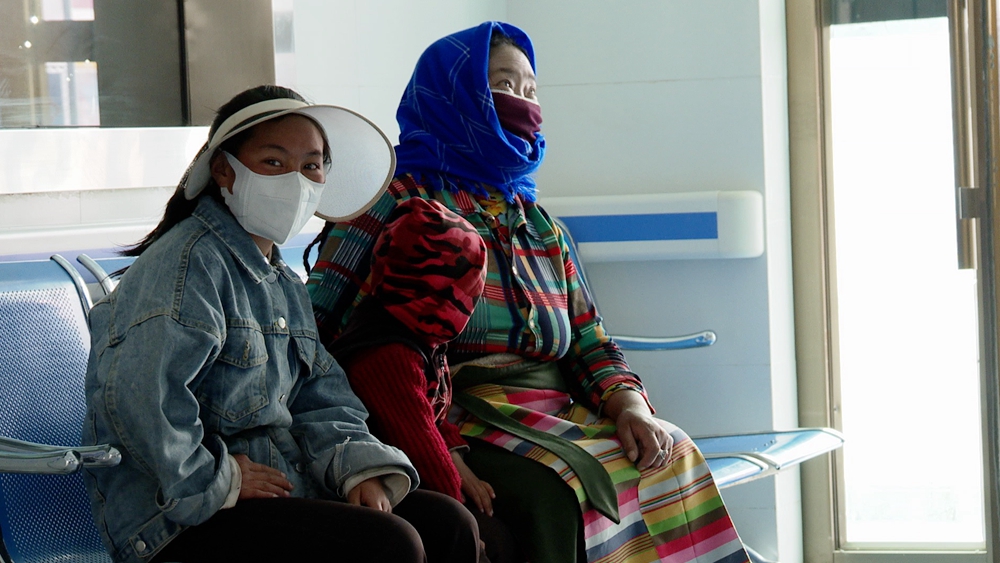
A view of Amdo County People's Hospital. /CGTN
A view of Amdo County People's Hospital. /CGTN
Decades ago, Amdo County People's Hospital in Nagqu City, southwest China's Tibet Autonomous Region, relied on cow dung for its heat supply. Though cattle manure is biodegradable and in abundance, the hospital's wards all required a specialized stove to create energy from this biomass source, presenting a variety of safety hazards for patients and staff.
That's no longer the reality following major changes and upgrades at the small county medical institution over the years.
"The infrastructure back in the day, the inpatient department had to burn cow dung to produce heat, so each ward had a stove for this," said Lei Xiaoqin, head doctor at the hospital.
"Obviously, this created a lot of safety hazards. But now, every ward has standard heating because of the modern equipment installed here. A lot of upgrades and improvements have happened. A new delivery room is also in place, with new equipment."
Established in 1966, the center started off with just a few wards and staff. At present, there are 42 medical workers providing care across 27 departments, including radiology, obstetrics, surgery and gynecology, and the hospital boasts a laboratory and emergency room.
The process of modernization is true for most of Tibet's medical sector today.
According to China's State Council Information Office, the Tibet Autonomous Region has a full system covering regular medical services, maternity and child care, as well as Tibetan medicine and therapies.
With China's far west initiating a multitude of cooperative projects with coastal provinces, the region has over 16,000 medical institutions with coverage being provided in all townships and villages.

Patients at Amdo County People's Hospital. /CGTN
Patients at Amdo County People's Hospital. /CGTN
In Amdo County, which sits around 4,000 meters above sea level in a tough environment, a major focus of its hospital has been providing expecting mothers with a safe place to deliver their children. Traditionally, many mothers would give birth at home resulting in either miscarriages or maternal deaths.
But with improvements in medical services and accessibility to a clinic, the situation in Tibet has improved substantially. As of 2021, the death rate among women in childbirth has dropped to 48 per 100,000, and the infant mortality rate to 7.6 per thousand – both record lows.
Lei said the hospital always works to ensure a balance between respect for local people's traditional medical practices and wishes, and ensuring the safety and health of residents.
"I think every ethnicity has their own cultural differences as well as living habits," said Lei. "We should respect others, but still provide standardized care. In the end, we respect local Tibetans in all aspects."
Tibetans are also given the option to choose which type of medicine they prefer. One patient we spoke with explained that it's really up to them to decide how to deal with their ailments after receiving a medical professional's advice.
In 2020, a wide-ranging social security system integrated medical insurance under one program, reducing costs and boosting reimbursement for the Tibetan people. These social security provisions are slowly improving, with the effects being seen across the region.
A social security system covering at least five major types of insurance (old age insurance, medical insurance, unemployment insurance, work-related injury insurance, and maternity insurance) is now in place for both urban and rural residents.
"The service here and hospital conditions are quite good. As for taking Tibetan, Chinese or Western medicine, it's all voluntary. Before, the service was different, now we can see a doctor 24 hours a day. If I go see a doctor, I don't have to spend any money; it's all reimbursed," said one patient, who wanted to remain anonymous.

